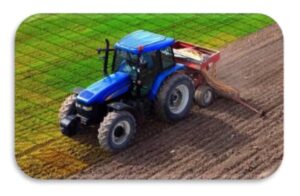 Science of Farming: Impact of Local Resources on Decision Making
Science of Farming: Impact of Local Resources on Decision Making
Farmers must use the resources they have to make informed decisions.
Does a Kenyan farmer have the same equipment as a North American farmer? (No. There are hundreds of variables that could impact what equipment is used in either country: amount of land, type of crop, budget, mechanics and parts, training and education, etc.). A Kenyan farmer might apply nutrients using a measuring spoon and walking their one-acre lot, while a North American farmer might use a tractor with global position systems and air seeder to fertilize hundreds of acres. The agronomic practice is the key similarity—if both use the 4R Nutrient Stewardship System, they will be more likely to grow a healthy crop and protect the environment.
How does an organic farmer respond to a problem with nutrients, pests or diseases as compared to a conventional farmer? There is no one-size-fits-all solution. In the end, every farmer grows the healthiest plants and animals they can. Organic vs conventional practices is a hot topic in North America. Both practices play a role in feeding the world responsibly. If you’d like to learn more about each practice, please visit www.Journey2050.com.
The goal of every farmer is to grow a healthy crop and raise healthy livestock while balancing their budget and environmental footprint. A farmer’s livelihood depends on sustainable practices.
Download the accompanying PowerPoint here.



